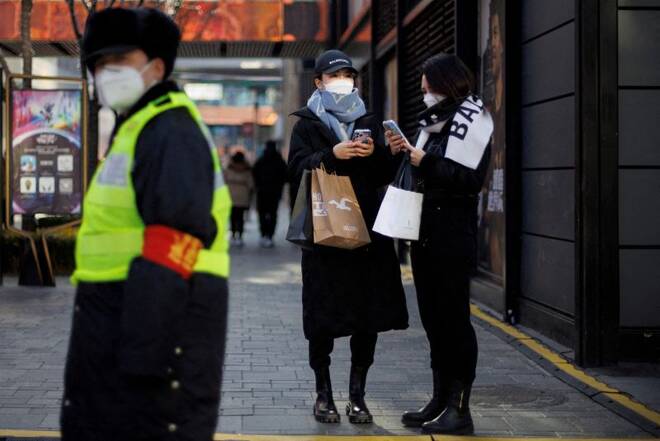Advertisement
Advertisement
Feeling poorer: Property slump hurting Chinese consumers, clouds recovery
By:
By Liangping Gao and Marius Zaharia BEIJING/HONG KONG (Reuters) - Liu Baoxiang, who runs a mahjong parlour in a city on China's rust belt, no longer splurges on extravagant fashion items after seeing the two flats he owns lose roughly a third of their value over the past two years.
By Liangping Gao and Marius Zaharia
BEIJING/HONG KONG (Reuters) – Liu Baoxiang, who runs a mahjong parlour in a city on China’s rust belt, no longer splurges on extravagant fashion items after seeing the two flats he owns lose roughly a third of their value over the past two years.
“I was previously considered wealthy in the area,” said Liu, who also owns some commercial property in the northeastern city of Liaoyuan.
“I used to buy mink coats in the tens of thousands of yuan, but I’ve hardly purchased any and haven’t travelled lately.”
While pockets of China’s property market, which is responsible for roughly a quarter of economic activity, are showing tentative signs of stabilising, the impact of the sector’s sharp downturn since 2021 is still rippling across the economy, and clouding its recovery.
Economists call it the wealth effect: asset owners who feel poorer after a sharp fall in prices tend to cut down on spending to rebuild their fortunes.
In play now in China, where around 70% of household wealth is in property, this phenomenon is weighing on the post-pandemic recovery of household consumption, which Chinese policymakers have vowed to make a more prominent driver of economic growth.
Capital Economics estimates net household wealth declined 4.3% overall last year, due to falling house and stock prices, the first decline since at least 2001.
“Households appear to have cut back their consumption in response to negative wealth effects,” said Julian Evans-Pritchard, head of China economics at the research firm.
“Recent homebuyers with large mortgages will have suffered the most and therefore likely cut back the most.”
Small town blues
Residents of smaller cities are feeling more pain than those living in big centres like Shanghai or Beijing, where home prices have been more stable.
Average new home prices in the 35 smallest cities among the 70 surveyed by the statistics bureau, known as ‘tier 3’, saw their 13th consecutive month of year-on-year declines in February.
The bureau does not release the exact prices, but real estate agents say they are 20-30% off peaks in some of those cities and even further off in smaller ones not covered by the official survey, such as Liaoyuan.
For new homes, the nationwide average price per square metre was 10,558 yuan ($1,543) for sales in January-February this year, 6.0% off its peak in January-February 2021, separate data from the statistics bureau showed.
A resident in the northern city of Langfang said her flat is now priced at 8,000 yuan per sq m, less than half the 18,000 yuan she paid for it three years ago.
“I have paid hundreds of thousands of yuan for a downpayment, paid off over 1 million yuan in loans and currently have over 1 million yuan in loans to repay,” said Emily, who only gave her first name for privacy reasons.
“I’m not going to spend money on anything this year. I need to tighten the belt. The suffering is unbearable.”
Weak confidence
To be sure, household consumption has picked up since China dismantled its draconian COVID curbs in December, with domestic tourism, cinemas and the catering industry leading the way. Car sales, on the other hand, were flat year-on-year in March.
Consumer confidence, while still below the range set over the past two decades, is also recovering from last year’s record lows.
Retail sales were up 3.5% year-on-year in January-February and are expected to accelerate in coming months when compared with last year’s smaller base, which was hurt by COVID curbs and lockdowns. March data will be released on Tuesday.
But some economists – pointing to a rise in household bank deposits of 17.8 trillion yuan ($2.60 trillion) last year – had expected a much faster resurgence in household spending, as seen in the West after COVID-19 curbs were lifted.
Data so far, including subdued inflation numbers, suggest most of the expected pent-up demand from the pandemic has yet to be unleashed.
Indeed, deposits rose a further 9.9 trillion yuan in the first quarter of this year. Many Chinese are using savings to repay mortgages early.
The lastest central bank survey found that in the first three months of the year, the share of respondents saying they preferred to save fell by 3.8 percentage points from the prior quarter but was still relatively high at 58%.
Nie Wen, an economist at Hwabao Trust, says record savings are unlikely to be converted into significant spending until the end of this year or 2024 as uncertainty about China’s growth outlook within a slowing world economy remains high.
“Middle-class residents, accounting for 50% of consumption, remain cautious,” Nie said.
Social media content creator Jane would have felt more like a middle class person had her 1.5 million yuan downtown apartment in the southwestern city of Chongqing not fallen in value by some 14%.
“We don’t buy new clothes anymore and we don’t go out,” she said, referring to her and husband. “It feels like we’ve bought a prison for ourselves.”
($1 = 6.8376 Chinese yuan renminbi)
(Additional reporting by Shuyan Wang; Editing by Marius Zaharia and Kim Coghill)
About the Author
Reuterscontributor
Reuters, the news and media division of Thomson Reuters, is the world’s largest international multimedia news provider reaching more than one billion people every day. Reuters provides trusted business, financial, national, and international news to professionals via Thomson Reuters desktops, the world's media organizations, and directly to consumers at Reuters.com and via Reuters TV. Learn more about Thomson Reuters products:
Did you find this article useful?
Latest news and analysis
Advertisement
